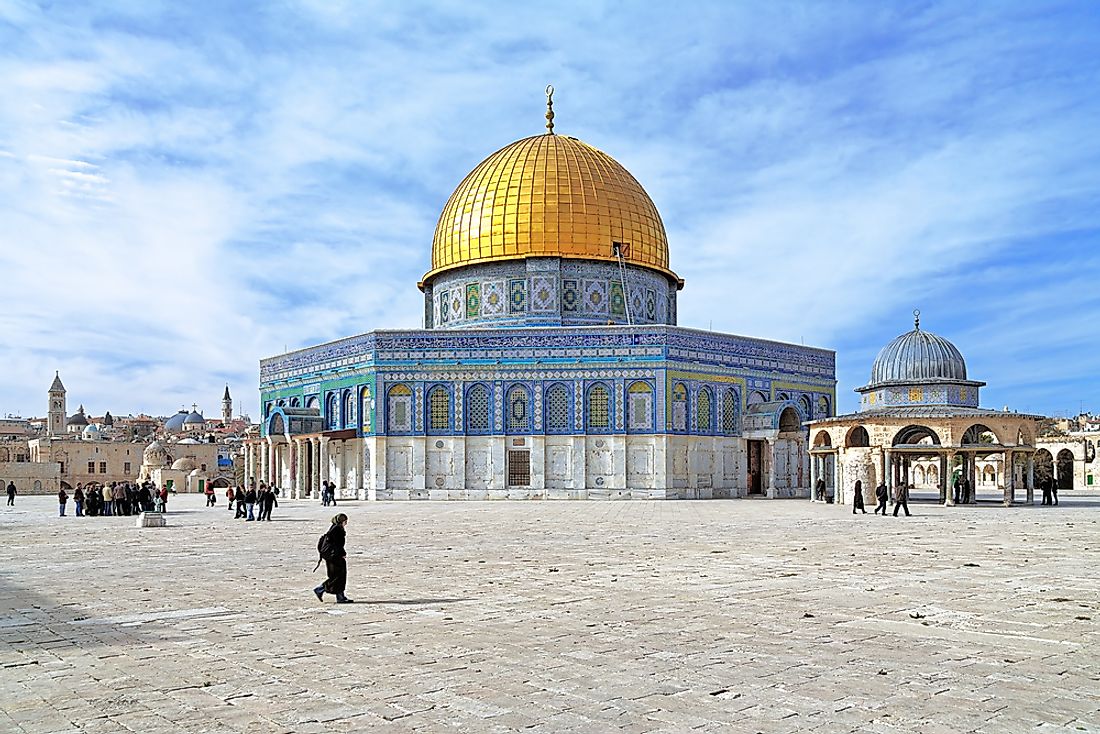Holy Sites of Judaism

Judaism is the tenth largest religious affiliation in the world. The religion, characterized by belief in one God, developed among Hebrews in ancient times. Judaism expresses the covenant that God contracted with the Israelites. Judaism incorporates a variety of daily practices, laws, theological positions, literature and numerous cultural traditions. The Torah is the divine foundation reference that guides the religion. Judaism has various holy sites that believers consider special and to which they attribute significant meaning. The sites are frequently visited by pilgrims and prayer troops. The five holy sites in Judaism are discussed below.
Temple Mount
Temple Mount is the holiest site in Judaism. It is believed that direct communication took place between the High Priest and God on this sanctified site. Rabbinic sages’ state that it is at the Temple Mount that the foundation stone of the universe was laid before the world expanded to its current form. It is further said that the creation of the worldly features was done here including the first man, Adam, from dust in the Mount.
Temple Mount is held with great importance since major biblical events occurred around it. The events are Jacobs dream, Binding of Isaac and the prayers of Isaac and Rebecca. King David bought a threshing floor from Araunah and Jebusite and paid the full price hence the site is fully redeemed. Solomon, the son of David accomplished construction of the first temple on this Mount. The Temple Mount was also identified as Mount Zion by the Hebrew Bible.
The Western Wall
The Western Wall was initially erected by Herod the Great to expand the Second Jewish Temple in Jerusalem. The site is considered holy because it is connected to the Temple Mount. The wall is the holiest place accessible to Jews for pilgrimage and prayers since entry to the Temple Mount is restricted. There are four retaining walls with the western one being closest to the former temple making it the most sacred outside the main Temple Mount. The walls have very big blocks of stones on the lower course, believed to have been constructed by Herod. The middle medium-sized stones were added in the Umayyad era. The top uppermost course of the wall was completed during the Ottoman period. The wall is famously known as the wailing wall. The wall is symbolic to the Jews in that though Jerusalem has been destroyed and then rebuilt nine times, the wall has remained intact.
Rachel's Tomb
Jews believe that the site is the burial place of matriarch Rachel. The holy site is built in traditional magma style in the northern entrance of the City of Bethlehem. As the third holiest site, Rachels tomb is one of the most recognized cornerstones of Jewish-Israel identity. The site is held in divine esteem by Jews, Christians, and Muslims. Pilgrims have visited the special site since ancient times to pay tribute and make supplications. The tomb is special in the Judaism religion because it is where Jacob buried his wife Rachel and built a pillar according to Genesis 35:20. The pillar was replaced with a square building covered with twelve stones with a dome on top of the grave. Several inscriptions are written on the walls in different languages. Rachel is further quoted in the Bible in Jeremiah 31:14 as a mother who weeps and prays for her children. The Jews, therefore, hold her as a mediator.
Biblical Mount Sinai
The Biblical Mount Sinai is the site where God gave the ten commandments to Moses. The commandments guide Judaism and obedience to them is paramount. Also referred to as Sinai or Horeb, the mountain is mentioned several times in the bible including in the Book of Deuteronomy. The mountain is sacred to Jews since according to Rabbinical traditions, Moses was not only given the written Law (the Torah) but also the Oral Law. It was at the top of this Sinai that God revealed to Moses the commandments and their interpretations. The importance of the events at the Biblical Mount Sinai is both in the covenant and in the content.
Mount of Olives
Mount of Olives was first mentioned in the Bible in 2 Samuel 15:30 in reference to a fight between David and Absalom. The Mount has a rich Jewish history and importance dating to the old testament. Mount of olives is adjacent the Old City of Jerusalem. Also known as Mount Olivet, the site is holy to Jews for being the location where key events happened in the life of Jesus Christ. Jesus ascended to heaven from this site. Mount of Olives has been a worship site for Christians since time immemorial. Currently, the Mountain is a pilgrimage site for followers of Judaism as well as Catholics and Protestants. Mount of Olives has been a Jewish cemetery for ages with graves of prominent Jews lying there. The Mountain carries a very rich history of Jewish Biblical kings and other prominent personalities. The sacred character of Mount of Olives is repeated in the Book of Ezekiel 11:23. The mountain is to date a holy site to Judaism followers because of its association with both Mary and Jesus.











